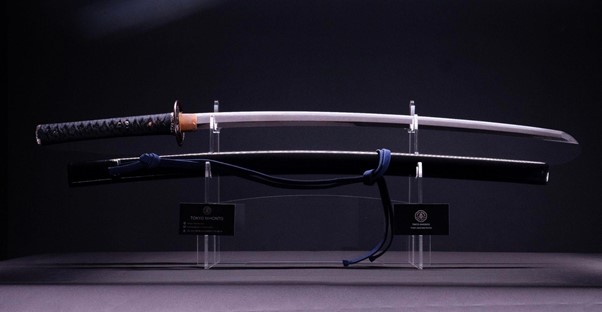The authentic Japanese katana is more than just a weapon; it is a symbol of Japan’s rich cultural heritage and meticulous craftsmanship. Revered by collectors and martial arts enthusiasts, the samurai sword embodies a fascinating blend of art and functionality.
This article explores the history, craftsmanship, and significance of the authentic Japanese katana, providing insights into why these swords continue to captivate the world.
The Historical Significance of the Samurai Sword
Origins of the Katana
The samurai sword, or katana, traces its origins back to the Heian period (794-1185). Initially designed as a practical tool for battle, the katana evolved into a revered symbol of the samurai warrior’s honor and skill. Its curved, single-edged blade allowed for swift, precise cuts, making it an indispensable weapon on the battlefield.
The Role of the Katana in Samurai Culture
In the samurai culture, the katana was more than a weapon; it was a spiritual companion. Samurai believed the sword held a part of their soul, reflecting their values of loyalty, discipline, and honor. The process of crafting a katana was considered sacred, with each swordmaker dedicating their life to mastering this ancient art.
Craftsmanship of the Authentic Japanese Katana
The Forging Process
The creation of an authentic Japanese katana is an intricate process that involves several stages of meticulous craftsmanship. The forging process begins with the selection of high-quality steel, typically a combination of hard and soft steel layers. This dual-layering technique, known as “differential hardening,” gives the katana its unique combination of a hard, sharp edge and a resilient spine.
- Tamahagane Steel: The primary material used in katana making is tamahagane, a traditional Japanese steel. It is smelted in a tatara furnace, resulting in steel with varying carbon content.
- Folding and Forging: The steel is repeatedly heated, hammered, and folded to remove impurities and create a strong, flexible blade. This folding process can be repeated up to 16 times, resulting in thousands of layers.
- Shaping and Polishing: After forging, the blade is shaped and polished to achieve the desired curvature and sharpness. The polishing process is crucial, as it enhances the blade’s aesthetic and functional qualities.
Unique Characteristics of the Katana
The authentic Japanese katana is renowned for its distinct features, which set it apart from other swords. These include:
- Curved Blade: The katana’s slight curve allows for efficient cutting and smooth drawing from the scabbard.
- Hamon Line: The Hamon is a visible temper line on the blade, resulting from the differential hardening process. It adds to the sword’s beauty and serves as an indicator of quality.
- Tsuka (Handle): The handle is typically wrapped in ray skin and silk cord, providing a secure grip. The Otsuka also houses the tang of the blade, ensuring stability and balance.

The Cultural Impact of the Samurai Sword
The Katana in Modern Times
While the samurai era has long passed, the katana continues to hold significant cultural and symbolic value in modern Japan. It is often featured in martial arts, such as kendo and iaido, where practitioners learn the techniques and philosophies of the samurai.
Collecting Authentic Japanese Katanas
Collectors worldwide seek authentic Japanese katanas for their historical value, craftsmanship, and aesthetic appeal. Owning a genuine samurai sword is considered a privilege, reflecting a deep appreciation for Japanese culture and heritage.
How to Identify an Authentic Japanese Katana
Key Features to Look For
When identifying an authentic Japanese katana, there are several key features to consider:
- Signature (Mei): Authentic katanas often bear the signature of the swordsmith on the tang. This signature can provide information about the maker and the era in which the sword was crafted.
- Hamon Pattern: The hamon pattern should be distinct and intricate, indicating the quality of the tempering process.
- Polish and Finish: The blade should have a mirror-like finish, with a well-defined edge and curvature. The polish enhances the katana’s visual appeal and sharpness.
Authenticity and Certification
Purchasing an authentic Japanese katana requires careful consideration and verification. Many reputable dealers provide certification from recognized organizations, such as the Nihon Bijutsu Token Hozon Kyokai (NBTHK), which authenticates the sword’s origin and craftsmanship.
Caring for Your Samurai Sword
Maintenance Tips
Proper care and maintenance are essential to preserve the beauty and functionality of an authentic Japanese katana. Here are some maintenance tips:
- Cleaning the Blade: Regularly clean the blade with a soft cloth to remove fingerprints and moisture. Use a light oil, such as shoji oil, to prevent rust and corrosion.
- Storage: Store the katana in a dry, cool place, preferably in a horizontal position with the blade edge facing up. Avoid touching the blade with bare hands, as oils and sweat can cause damage.
- Periodic Inspection: Periodically inspect the sword for any signs of wear or damage. If necessary, seek professional polishing and repair services to maintain its condition.
Conclusion
The authentic Japanese katana remains a timeless symbol of Japan’s rich cultural heritage and exceptional craftsmanship. Its historical significance, intricate forging process, and cultural impact make it a prized possession for collectors and enthusiasts alike. By understanding the artistry and tradition behind the samurai sword, one can truly appreciate the unparalleled beauty and craftsmanship of the authentic Japanese katana.






